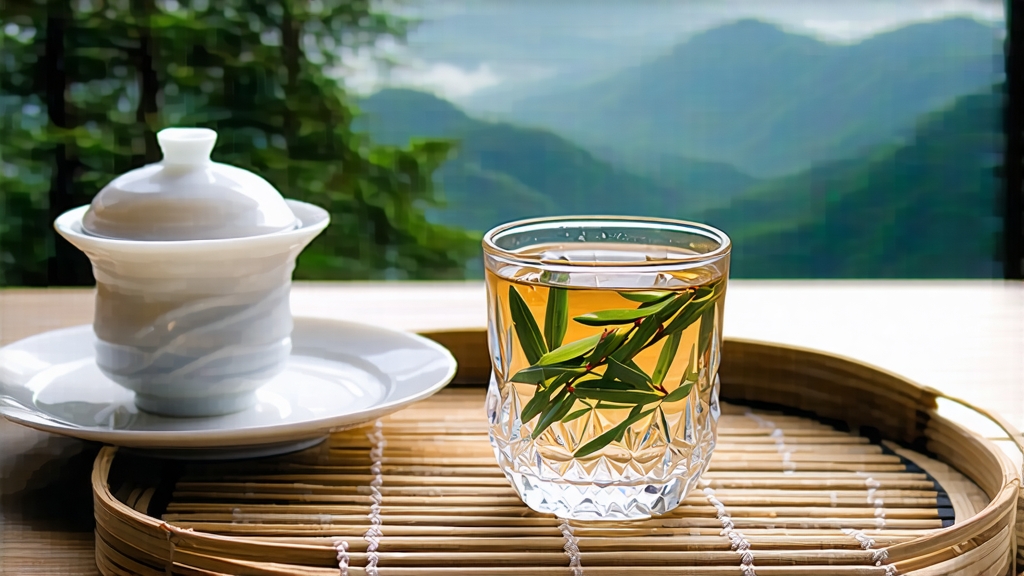
White tea is the most minimally treated of all China’s six great tea families, and within that quiet realm Fuding Silver Needle (Bai Hao Yin Zhen) reigns as the purest expression of leaf and time. International drinkers often meet white tea through bagged blends, yet the original loose bud tea from northern Fujian’s coastal hills remains largely untasted beyond specialist circles. This article invites you to step past the supermarket shelf and into the pine-cooled warehouses of Tai Mu mountain, where Silver Needle has been sun-withered for almost a millennium.
History: From Song Tribute to Global Muse
The first written record appears in the Song Dynasty “Da Guan Cha Lun” (1107 CE), describing “white buds from Fuding, presented to the capital on horseback.” Those early cakes were steamed, not withered, but the region’s big-white-varietal tea trees already commanded courtly attention. When Ming literati turned against compressed tea, Fuding farmers simply laid the plump buds on bamboo screens, letting sea breezes and mountain shade do the work. By late Qing, Silver Needle was bartered through Fuzhou port for European silver; Victorian ladies prized its “champagne of teas” nickname, believing the pale liquor preserved youth. Modern science now confirms high antioxidant levels, but the romance of moon-lit withering persists.
Micro-Terroir: Why Fuding, Why Da Bai Hao
Two geographic factors create the cultivar’s signature. First, the Taimu range rises just 30 km from the East China Sea; maritime fog drifts inland each dawn, wrapping tea gardens in 80 % humidity that slows moisture loss and encourages enzymatic sweetness. Second, the soil is weathered granite rich in potassium and trace selenium, elements that fatten the bud and thicken its trichomes—those silvery hairs that give “pekoe” its name. Neighboring Zhenghe county produces a darker, broader-bud Yin Zhen, but only Fuding’s version carries the downy glow that catches dawn light like frost on a plum branch.
Plucking Calendar: One Dawn, One Leaf
Silver Needle is not merely “young leaf”; it is the unopened winter bud, dormant from late October until Qingming (early April). Experienced pickers rise at 4:30 a.m., when dew still clamps the bud’s two protective scales together. Using thumbnail, not blade, they snap only the segment that feels “like a silk worm’s back”—firm yet springy. A half-kilo of finished tea demands 18,000 such buds, roughly one picker’s dawn yield. Anything plucked after 10 a.m. or during rain is relegated to lower-grade White Peony; the bud must arrive at the factory cool, unbruised, and aromatically mute, ready to awaken under the sun.
Craft: The Art of Doing Almost Nothing
There is no firing, no rolling, no shaking; only four variables—spread weight, temperature, airflow, and time. Buds are laid 2 cm thick on perforated bamboo trays stacked inside a sunroom whose slatted roof can be opened or closed like a camera aperture. For the first two hours the leaf rests in 70 % shade, allowing internal moisture to migrate outward; then trays are rotated into full morning sun (26–28 °C) for thirty-minute bursts. A master witherer listens rather than looks: when the bud’s central vein crackles like thin ice under pinch, it is carried back to shade for oxidation arrest. This yin-yang dance repeats for 48–60 hours until moisture falls to 8–9 %. Finally, the tea is charcoal-warmed—not roasted—at 40 °C for twenty minutes, just enough to fix the aroma without caramelizing sugars. The result is a feather-light coil of silver and jade green, still smelling of fresh melon and wet stone.
Grades & Ageing: From Velvet to Amber
Unlike green tea, Silver Needle improves with controlled ageing. New tea displays white-down fuzz against jade-green skin; liquor is the color of pale chardonnay, with notes of cucumber, honeydew, and a faint marine snap. After three years in breathable kraft paper at 25 °C and 60 % humidity, the down dulls to pewter while amino acids convert into darker cocoa and orchid compounds. A